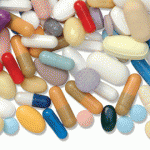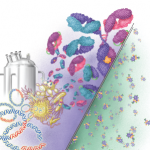How Much Savings?
It’s hard to predict the financial savings of biosimilars until they come to market. By looking at past biologic sales, potential discounting due to increased competition, European biosimilar prices and increasing penetration of the drug market over the next decade, cost savings may top $44 billion over the next decade, and biosimilar price discounts may be as much as 35% lower, according to a 2014 study released by the RAND Corp.
Patients like Carolyn Amisano, who’s had RA for 42 years, say lower prices will make drugs accessible to more people who need them. “The price will make a real difference in whether you’d be able to take that medicine. If they can come out with something more affordable, it would be great for many people, and saving a lot of families,” said Ms. Amisano, who has used two biologics in the past. “It’s a shame if you have to let drug costs influence your health. As long as I know it will work, and if it’s going to do the same thing, then it would be tremendous.”
Although patients like Ms. Amisano are used to generic drugs, biosimilars won’t be as simple a switch, said Martin Zagari, MD, vice president of global health economics at Amgen, the biopharmaceutical company based in Thousand Oaks, Calif. Communication about biosimilars will help allay fears and confusion.
“We believe even more expertise will be required from such groups as the ACR. We should expect that most people are predicting that this notion of precision medicine and personalized medicine actually increases the role of deep expertise and patient-centeredness,” he said.
Room for Innovation
Savings generated by biosimilars will also open space in research and development budgets for future breakthrough products, said Dr. Zagari. “The medicines that are now seen as the most expensive are also going to be the ones that are creating new headroom for treatment. When these molecules are able to be provided in biosimilar form, they will have an effect on the system as profound as generic drugs have had to date.”
Focus on the improved, long-term health outcomes that more affordable biologic drugs can provide and the savings they will offer, he said.
“Predictability of innovation is actually becoming more and more something that we can count on as a society. How can we afford new medicines? In the 1980s and 1990s, only about one-third of medicines were generic. Now, it’s almost 90% of prescriptions. This is how we get [healthcare costs] under control,” he said.



